Are you a dog owner who loves seafood? If so, you might have wondered whether you can share your haddock dinner with your furry friend. Dogs, known for their curiosity and eagerness to eat anything in sight, may make you wonder about the safety and nutritional value of certain foods. In this comprehensive guide, we’ll delve into the world of haddock and dogs, exploring whether it’s safe for your canine companion to indulge in this delicious fish.
Contents Overview
What is Haddock?
Haddock, a member of the cod family, is a popular fish found in the North Atlantic Ocean. With its mild flavor and flaky texture, haddock is a staple in many seafood dishes, ranging from fish and chips to seafood stews.
Nutritional Value of Haddock
Haddock is a nutritious fish that offers several health benefits. It is a rich source of high-quality protein, which is essential for muscle development and overall health. Additionally, haddock is packed with omega-3 fatty acids, such as EPA and DHA, which support heart health, joint function, and cognitive function. This fish also contains vitamins and minerals, including vitamin D, vitamin B12, selenium, and phosphorus, which play vital roles in various physiological processes. Overall, haddock is a nutritious addition to a balanced diet, providing essential nutrients that contribute to overall well-being.
Can Dogs Eat Haddock Safely?
Yes, dogs can safely eat haddock as long as it is prepared properly and served in moderation. Haddock is a good source of protein, omega-3 fatty acids, vitamins, and minerals, which can benefit dogs’ health. However, it’s important to remove all bones from the haddock to prevent choking hazards and cook it plain without any seasonings, oils, or sauces. Feeding haddock to dogs as an occasional treat rather than a regular part of their diet helps prevent digestive upset and nutritional imbalances. By following these precautions, dog owners can safely share haddock with their canine companions, offering them a tasty and nutritious snack.
Potential Benefits of Haddock to Dogs
- Protein Source:
- Haddock serves as a lean protein source, ideal for maintaining muscle mass and supporting healthy growth in dogs of all ages.
- Helps fulfill the dietary requirements of active dogs and those with high-energy needs.
- Omega-3 Fatty Acids:
- The omega-3 fatty acids found in haddock contribute to a shiny coat and healthy skin in dogs.
- Supports cognitive function and may aid in the management of certain inflammatory conditions, such as arthritis.
- Vitamins and Minerals:
- Vitamin D in haddock assists in calcium absorption, promoting strong bones and teeth in dogs.
- Vitamin B12 supports neurological health and aids in the production of red blood cells.
- Selenium acts as an antioxidant, helping to protect cells from damage caused by free radicals.
Potential Risks and Precautions of Feeding Haddock to Dogs
While haddock can offer several potential benefits to dogs, it’s essential to be aware of the associated risks and take necessary precautions to ensure the safety and well-being of your furry friend. In this segment, we’ll explore the potential risks and precautions to consider when feeding haddock to dogs.
Potential Risks of Feeding Haddock to Dogs:
- Bones:
- Haddocks may contain small bones that pose a choking hazard or risk of gastrointestinal injury if ingested by dogs.
- Bones can splinter and cause internal damage, leading to discomfort, injury, or obstruction of the digestive tract.
- Mercury Contamination:
- Like other fish, haddock may contain traces of mercury, a heavy metal that can accumulate in the body over time.
- High levels of mercury can be toxic to dogs and may lead to neurological issues, tremors, or impaired cognitive function.
- Allergic Reactions:
- Some dogs may be allergic to fish, including haddock, resulting in adverse reactions such as itching, skin irritation, or gastrointestinal upset.
- Allergic reactions can vary in severity and may require veterinary attention if symptoms persist or worsen.
Precautions When Feeding Haddock to Dogs:
- Bone Removal:
- Ensure all bones are carefully removed from the haddock before feeding it to your dog to prevent choking or injury.
- Thoroughly inspect the fish and manually remove any remaining bones to minimize the risk of ingestion.
- Cooking Method:
- Cook haddock thoroughly to kill any harmful bacteria or parasites that may be present, reducing the risk of foodborne illnesses in dogs.
- Avoid seasoning or flavorings that may contain ingredients harmful to dogs, such as onions, garlic, or excessive salt.
- Moderation:
- Introduce haddock into your dog’s diet gradually and in moderation to monitor for any adverse reactions or digestive issues.
- Avoid overfeeding haddock or feeding it exclusively, as this may lead to nutritional imbalances or deficiencies over time.
- Quality Assurance:
- Source high-quality, fresh haddock from reputable suppliers to ensure it is free from contaminants, additives, or preservatives that may be harmful to dogs.
- Consider purchasing fish specifically labeled as safe for pet consumption or consulting with your veterinarian for recommendations.
Safe Ways to Feed Haddock to Dogs
- Bone Removal:
- Carefully remove all bones from the haddock before feeding it to your dog to prevent choking hazards or gastrointestinal issues.
- Thoroughly inspect the fish and manually remove any small bones that may be present, ensuring only boneless portions are served to your dog.
- Cooking Method:
- Cook the haddock thoroughly to eliminate any harmful bacteria or parasites that may be present, ensuring it is safe for your dog to consume.
- Opt for simple cooking methods such as baking, grilling, or steaming, without adding any seasonings or flavorings that may be harmful to dogs.
- Portion Control:
- Serve haddock to your dog in appropriate portion sizes, taking into account their size, weight, and dietary needs.
- Avoid overfeeding haddock or making it a significant portion of their diet to prevent nutritional imbalances or digestive issues.
- Quality Assurance:
- Source high-quality, fresh haddock from reputable suppliers to ensure it is free from contaminants, additives, or preservatives that may be harmful to dogs.
- Consider purchasing haddock specifically labeled as safe for pet consumption or consulting with your veterinarian for recommendations on trusted brands.
- Variety and Balance:
- Incorporate haddock into your dog’s diet as part of a balanced and varied meal plan, rotating it with other protein sources such as chicken, beef, or turkey.
- Include a variety of nutrient-rich foods to ensure your dog receives a well-rounded diet that meets their nutritional requirements.
- Supervision and Observation:
- Monitor your dog closely when introducing haddock into their diet for the first time, observing for any signs of allergic reactions or digestive upset.
- If your dog experiences any adverse reactions such as itching, vomiting, or diarrhea after consuming haddock, discontinue feeding it and consult with your veterinarian.
When to Avoid Haddock to Dog
- Allergic Reactions: If your dog has a known allergy to fish or seafood, avoid feeding them haddock to prevent allergic reactions such as itching, skin irritation, or digestive upset.
- Bones: Avoid feeding haddock to dogs if you are unable to thoroughly remove all bones, as they pose a choking hazard or risk of gastrointestinal injury.
- Mercury Concerns: If you’re concerned about mercury contamination or heavy metal exposure, consider alternative protein sources with lower mercury levels for your dog’s diet.
- Digestive Sensitivity: If your dog has sensitive stomach or digestive issues, it’s best to avoid introducing haddock or any new foods into their diet without consulting with your veterinarian first.
- Pre-existing Health Conditions: If your dog has pre-existing health conditions such as pancreatitis or kidney disease, consult with your veterinarian before incorporating haddock into their diet, as it may exacerbate their condition.
Safe and Suitable Alternatives of Haddock for Dogs
If haddock isn’t suitable for your dog, there are several safe and nutritious alternatives to consider. Opt for lean protein sources such as cooked chicken, turkey, or beef, which provide essential amino acids for muscle development and repair. Fish varieties like salmon or mackerel offer omega-3 fatty acids for skin and coat health without the risk of bones. Additionally, eggs provide a protein-rich option that’s easy to digest and can be served boiled or scrambled. For plant-based alternatives, consider incorporating cooked vegetables like carrots, green beans, or sweet potatoes into your dog’s diet for added fiber and vitamins. Always consult with your veterinarian to ensure you’re providing a well-balanced diet tailored to your dog’s individual needs.
Bottom Line
In conclusion, haddock can be a safe and nutritious treat for dogs when served in moderation and prepared properly. With its protein, omega-3 fatty acids, vitamins, and minerals, haddock offers several health benefits for canine companions. However, it’s essential to remove all bones, cook it plain, and monitor your dog for any adverse reactions. By following these guidelines, you can share the joy of seafood with your furry friend while keeping their health and well-being in mind. So, next time you’re enjoying a delicious plate of haddock, feel free to share a bite with your canine companion, knowing that you’re treating them to a tasty and nutritious snack.





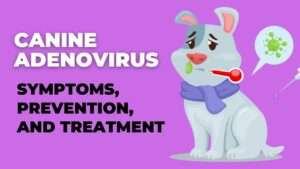
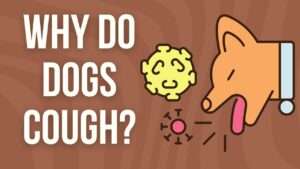







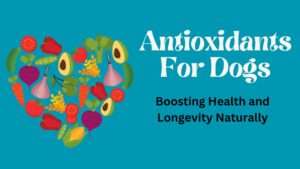







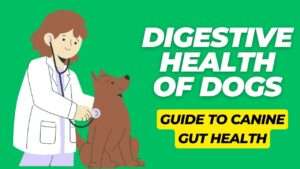





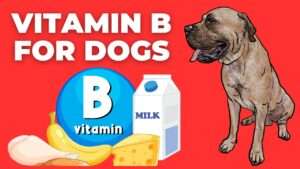







+ There are no comments
Add yours